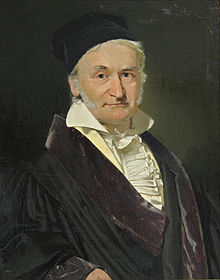Gaussian year
Appearance

A Gaussian year is defined as 365.2568983 days.[1] It was adopted by Carl Friedrich Gauss as the length of the sidereal year in his studies of the dynamics of the solar system. A slightly different value is now accepted as the length of the sidereal year,[2] and the value accepted by Gauss is given a special name.
A particle of negligible mass, that orbits a body of 1 solar mass in this period, has a mean axis for its orbit of 1 astronomical unit by definition. The value is derived from Kepler's third law as
where
- k is the Gaussian gravitational constant.[3]
See also
[edit]References
[edit]- ^ Standish, E. M. (2004-06-01). "The Astronomical Unit now". Proceedings of the International Astronomical Union. 2004 (IAUC196): 163–179. doi:10.1017/S1743921305001365. ISSN 1743-9221.
- ^ Chamberlin, Alan. "Astrodynamic Constants". ssd.jpl.nasa.gov. Retrieved 2016-11-16.
- ^ Herrick, S.; Baker, R. M. L. Jr.; Hilton, C. G. (1958-01-01). "Gravitational and Related Constants for Accurate Space Navigation". In Hecht, F. (ed.). VIIIth International Astronautical Congress Barcelona 1957 / VIII. Internationaler Astronautischer Kongress / VIIIe Congrès International d'Astronautique. Springer Berlin Heidelberg. pp. 197–235. doi:10.1007/978-3-662-39990-3_17. ISBN 9783662390207.

